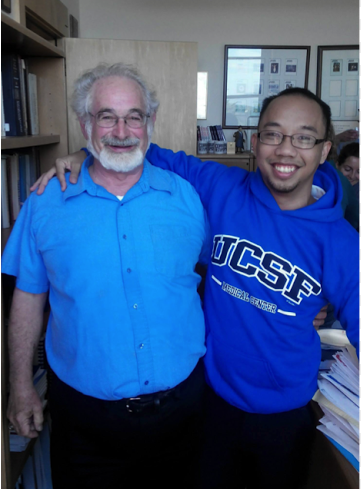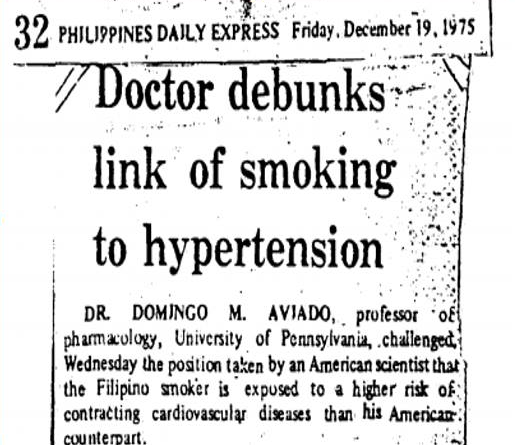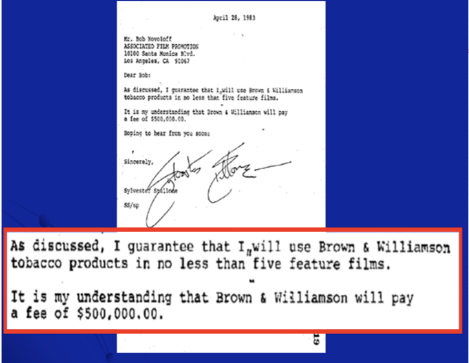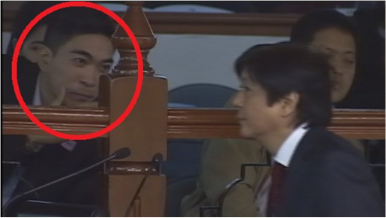Because we love initiatives that bridge gaps in our society and admire his work in the health sector, today we feature Dr. Lee Yarcia, doctor + law student + HealthJustice Research Manager + editor of the Philippine Law Journal.

Dr. Lee (R) with Dr. Stanton Glantz (L), a friend and tobacco control activist in USA
Medicine + Law = ?
It might be intriguing a lot of you that Lee is already a medical doctor and is studying again to be a lawyer. You might be thinking that he initially wanted to be a lawyer even during high school, but he chose to become a doctor because of pressure from family or teachers.
That isn’t the case.
Initially, Dr. Lee entered UP to pursue Molecular Biology and Biotechnology. However, he received an invitation from UP to enter their INTARMED program (UP’s condensed 7-year program for top high school graduates aspiring to be medical doctors) and was encouraged to enter the program because a physician is exposed to the sciences and at the same time a career in medicine would open more doors for Dr. Lee.
While in UP Manila, Dr. Lee was active in several organizations. One of his eye-opening experiences was doing community medicine during his third year of med school. Dr. Lee would visit the poorer barangays and join community programs to empower patient groups in the countryside. It was here that he realized one to one patient encounter is not enough. It’s always good to help out each patient, but it is not efficient because these patients don’t have regular access to a health center. While in medicine, Dr. Lee also joined the Universal Health Care Study Group. His involvement in this initiative further solidified his belief that no one should be denied healthcare because of financial constraints and that the solution to health care access is policy change.
Dr. Lee personally saw how policy could positively impact patients. While in PGH, he would see potential patients who cannot avail of treatment because they couldn’t pay. One of his more vivid memories is that of a lola dragging her leg while walking around PGH. From afar, he immediately diagnosed her as a stroke patient in need of treatment. However, since she couldn’t pay for a CT scan and her case did not seem urgent because she can still walk, she was not able to access the healthcare that she needed in the ER setting. PGH and other hospitals have doctors, nurses, and healthcare professionals with good clinical skills that are not maximized because policy prevents the most needy patients from accessing them. In order to complement the one-to-one patient encounters, he decided the Philippines needed a sweeping policy change to reach and impact more people.
While he had these insights, it wasn’t until his mentors suggested he study law after medicine that he seriously considered the possibility. After all, in order to spearhead a health policy revolution, a lawyer with the right values in the universal health care movement is needed. But, he still wasn’t sure if he should pursue law or surgery. He was leaning towards law largely because law is where his passion and talent intersect. To further cement his decision, he decided to schedule a counseling session with mentors he admired in PGH. One of the advice from a doctor that struck him was that if Lee really wants to change the health landscape in the Philippines, he needs a bigger bat to hit harder, and if it’s law for Dr. Lee, then he should pursue it. With that comment, he decided to go for it.
Two months into UP Law, he realized that law is for him. He found immediate application of medical concepts in the context of law during the time when the Reproductive Health was before the Supreme Court. (Dr. Lee was tapped by the Office of the Solicitor General to provide some input on the case before the Supreme Court). Dr. Lee was only a freshman at that time, but he agreed to help. While working on the case, the lawyers would ask Dr. Lee questions about reproductive health and Dr. Lee’s experiences as a clinician.
While any law school can teach you to be a good lawyer, Dr. Lee realized that a perspective in medicine or any health profession is so important for any lawyer advocating for health. With a law background, Dr. Lee knows more than just the rights of doctors and patients – he knows how to protect their rights, and he wants other students to have the same skill. In order to further widen the perspective of UP law students interested in health policy but without much knowledge on health, he has become part of an initiative to form a health advocacy group in UP Law.
Right now, he’s having fun in UP Law’s Malcolm Hall as a student and Editor of the Philippine Law Journal (PLJ), the oldest law journal in Asia. (He no longer holds clinic hours, but he does help out family, friends, and the UP Law staff) For the fourth issue of the Philippine Law Journal, he and the PLJ team are planning to generate legal opinions and perspectives on the overlaps of medicine and law. For example, how are the insane assessed by the law? The state of mind is very important in law as it determines a person’s accountability, but without a proper diagnosis, a mentally ill person may be misjudged by the court. After UP Law, he hopes to work as a litigation and public health lawyer and take a Master’s degree in Public International Law.
HealthJustice
Dr. Lee had heard of HealthJustice, a health policy think tank, even before he had entered UP Law. When Dr. Lee was still active in the debate community, together with HealthJustice, he helped organize a debate competition centered on issues in the health sector. HealthJustice’s work is very close to his goal of improving the state of public health in the Philippines as it seeks to bridges the gap between health policies and public health. Dr. Lee helps with the policy and research work of HealthJustice.
HealthJustice wants to ensure that all government policies must be reviewed for any possible impact on health. HealthJustice currently has three campaigns: High 5 Life, Time’s Up, Tobacco!, and True Progress is Tobacco Free.
High 5 Life focuses on health promotion through healthy diet, physical activity, tobacco control, alcohol control, and road safety. In the future, a possible policy High 5 Life campaign will focus on is the implementation of sugar taxes. This is still up for debate however.
At present, the main focus of HealthJustice is tobacco control because several organizations focus on drugs, HIV/AIDS, and reproductive health already but not organizations advocate for tobacco control. While the fight for reforms on tobacco control may seem trivial compared to “bigger” global health issues, the reality is that the harms of tobacco have been severely underrated. Seven of the top 10 causes of mortality are caused by tobacco. Controlling how it is perceived by the public and showing the necessity of tobacco policy reforms would go a long way to improving public health. HealthJustice’s long term goal is a tobacco-free generation. Some of HealthJustice’s big milestones include graphic health warnings on cigarette packs and sin tax.
In order to reach their long term goal, HealthJustice has two tobacco control campaigns: Time’s Up, Tobacco! (TUT) and True Progress is Tobacco Campaign. These are both under the Article 5.3 initiative of the WHO Framework Convention on Tobacco Control (FCTC) found below:
“In setting and implementing their public health policies with respect to tobacco control, Parties shall act to protect these policies from commercial and other vested interests of the tobacco industry in accordance with national law.” (WHO FCTC)
TUT is an umbrella campaign that seeks to expose the dirty tactics of Big Tobacco. On the other hand, the True Progress is Tobacco-Free campaign unites civil society organizations. Any civil society organization that wants to make a public declaration against the tobacco industry can sign up. With both campaigns, HealthJustice hopes to stop Big Tobacco from interfering with public policy.
Tobacco Control: Does it exist?
Despite all the scientific evidence that is against tobacco use, cigarette smoking is still a daily sight.
Why?
One of the reasons is obviously the product itself. The nicotine content makes cigarette smoking addicting. (Just a side note, nicotine manipulation by the tobacco companies is a common practice which only makes the addiction worse!) It’s safe to say that cigarettes aren’t a normal product that you can make a balanced choice about whether to buy it or not. This is the reason that tobacco control should be a main point in health policy.
The main reason for the lack of tobacco control reform, however, is that the tobacco giants manipulate policies and the people with their influence and wealth. It’s pretty brilliant how they have sustained their presence in our everyday lives unbeknownst to us. We’re going to briefly outline some of their sneaky plans of action.
Sewing Doubt
Several instances of “credible” doctors being under the payroll of cigarette companies have emerged. During the 1980s, Dr. Domingo Aviado, who received the “most distinguished Filipino abroad” award, was published in a newspaper report stating that there is no link between smoking and cancer.[1] Interestingly, due to a class action lawsuit, Philip Morris was required by the US Court to submit all their documents during that period. Upon reviewing the documents, they discovered Dr. Aviado was under the payroll of Philip Morris.

Image courtesy of Dr. Lee Yarcia
The instance above is just one of the few. Doctors were also used to market cigarettes with filters. Doctors touted these cigarettes as the healthier version. In truth, they never should have even promoted cigarettes to begin with.
Cigarette companies also work on their own research on cancer and cigarette smoking in order to counter the mounting scientific evidence against them.
If you want to learn more about these shady deals, a highly recommended film from Dr. Lee is Merchants of Doubt. You can also check Truth Tobacco Industry Documents to learn more.
Stellar PR and Marketing
Tobacco companies monitored WHO and DOH activities and blocked all anti-tobacco actions via media. An example shown below is the Philip Morris Asia Public Relations Plan.

Philip Morris Asia Public Relations Plan.[5]
Tobacco companies employed several strategies to increase cigarette consumption. One brilliant move was creating the menthol cigarette. Now, every convenience store seems to have these cigarettes.
Aside from the menthol cigarette innovation, tobacco companies also create various advertisements. One hilarious cigarette advertisement was placing the Virgin Mary on their ads because the Philippines is predominantly Catholic. We personally don’t think it’s a particularly smart campaign following their more ingenious ways of increasing consumption. Unfortunately, we don’t have data to know if this kind of ad was successful.

Image from http://www.tobaccofreekids.org/
Aside from targeting the religious sector of society, tobacco companies try to make smoking as sexy as possible. Cigarettes are marketed as a way into the cool crowd. Who can forget the Marlboro Man? The Marlboro Man was a huge marketing success. But the dominance of tobacco companies is also because they go beyond typical print advertisements. Tobacco companies pay the entertainment industry for product placement. In fact, Sylvester Stallone was paid USD 500,000 to use Brown & Williamson tobacco products in at least 5 feature films. The “cool” culture surrounding cigarette use is the motivation behind the graphic health warnings on cigarette packs. It might not stop adults and teenagers, but it will likely scare children. Hopefully, these children will grow up without considering tobacco use.

Image courtesy of Dr. Lee Yarcia
Government Interference
HealthJustice believes that the tobacco industry must be prevented from interfering with the government because scientific evidence shows that there is a clear conflict of interest between the tobacco industry and public health. However, interference seems to be the status quo.
During the sin tax deliberations, tobacco industry lawyers were found to be directly talking to Senator Bongbong Marcos and offering data and information.[3]

A lawyer of Philip Morris talking to Senator Marcos[3]
Tobacco companies also countered the need for sin tax by stating that a high sin tax would fuel the illicit tobacco trade. Hence, not only would smoking still exist, but the economy would just be hurt by the illicit trade. However, there is no correlation between illicit trade and tobacco taxation.[4] In fact, the reason behind the existence of illicit tobacco trade is corruption and bureaucracy. One way to stop illicit trade is to put a tracing stamp for all tobacco products.
Other than the interference during the sin tax deliberations, tobacco companies also prevent proper policy implementation. When HealthJustice partnered with MMDA to make smoking in a public place illegal, several people were caught smoking. Upon being interviewed, these smokers revealed that they were being paid to smoke in public. The motivation behind this interference is to “prove” that the policy doesn’t work because people are challenging the law by smoking in public.
Drugs, Mental Health, and Alcohol
Before we end the article, we also wanted to shed some light on three issues that are a prominent topic in media or need to be more viral.
Drugs
Every day, there seems to be news about drug-related killings and crimes. But, is the war on drugs a good strategy? The global agreement is that the war on drugs has failed.
One “out of the box” idea that we are open to is a harm reduction strategy. If you look at the drug problem by focusing on the patient, you’ll realize the same thing WHO recognizes – you cannot change people’s behavior immediately; you need to help drug users. One way this is being done abroad is legalizing or decriminalizing drugs. This way, the stigma against drug users is removed and they can safely approach rehabilitation centers. At the same time, WHO recommends that a needle exchange program (old needles are exchanged for new ones) be implemented. One reason for rising HIV/AIDS cases is needle sharing of drug users. With a needle exchange program, HIV/AIDS contamination will be minimized. Moreover, a needle exchange program can become a drug user’s gateway to a health professional. If you would like to more about drug policy in the Philippines, you can check out NoBox Philippines.
Alcohol
In the Philippines, it is very easy to buy alcohol even as a minor. While underage alcohol consumption may seem fun, a debate on the harm of alcohol consumption is ongoing. Based on the harms caused to the user and society, some argue that alcohol is one of the most dangerous drugs and should be a priority in health policy.[2]
At BOX, we like crazy ideas. If tobacco has graphic health warnings, then we think health warnings on alcohol bottles should be studied as a possible policy. We don’t know if this will be effective at all because it is a policy that has never been implemented on a nationwide scale unlike the graphic health warnings on cigarette packs.
Mental Health
While this is gaining some traction in Philippine society, the Philippines has been very late in addressing mental health issues. Few mental health facilities exist. The mentally ill are under the radar and do not get proper treatment. The government must recognize that mental health is a problem that must be prioritized. Thankfully, people (government officials, NGOs, and citizens) are lobbying for a national mental health law.
Dr. Lee’s Advice
This article was a result from a very enlightening conversation with Dr. Lee. While BOX is a science magazine, we couldn’t help but bring to light the huge impact that policy has on any issue relating to science.
If you aren’t already inspired by Dr. Lee and HealthJustice’s work, here is advice from Dr. Lee (nonverbatim):
Instead of thinking about the career you want in the future (ex: doctor, lawyer etc), look for a problem that you want to solve and capacitate yourself to have the tools in order for you to answer the problem. Ask yourself, ‘What is the problem that I feel passionate about?’ and ‘What tools do I need?’. Work your life plan around that answer.
References
[1] Alechnowicz, K. & Chapman, S. (2004). The Philippine tobacco industry: “the strongest tobacco lobby in Asia”. Tob Control, 13(2), ii71-ii78. doi:10.1136/tc.2004.009324
[2] Boseley, S. (2010, November 10). Alcohol ‘more harmful than heroin or crack’. The Guardian. Retrieved from https://www.theguardian.com/society/2010/nov/01/alcohol-more-harmful-than-heroin-crack
[3] Fonbuena, C. (2012, November 27). Bongbong Marcos on ‘gotcha’ picture: Philip Morris offered data. Rappler. Retrieved from http://www.rappler.com/nation/16819-bongbong-marcos-on-gotcha-picture-philip-morris-offered-data
[4] Goodchild, M., Perucic, A., & Nargis, N. (2016, January 13). Modelling the impact of raising tobacco taxes on public health and finance. Bulletin of the World Health Organization, 94(4), 233-308. http://dx.doi.org/10.2471/BLT.15.164707
[5] Philip Morris Asia 1995 Public Relations Plan. Retrieved from https://www.industrydocumentslibrary.ucsf.edu/tobacco/docs/#id=xybp0068